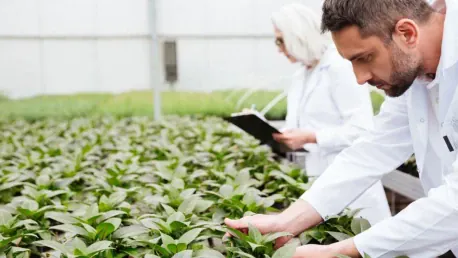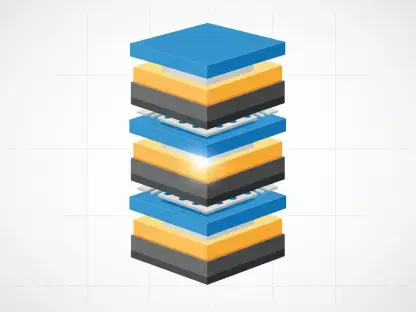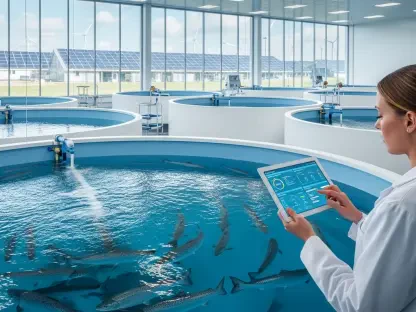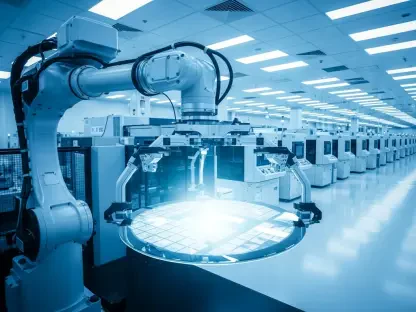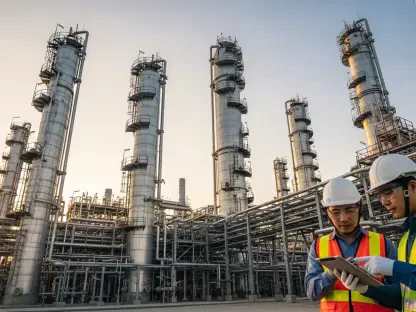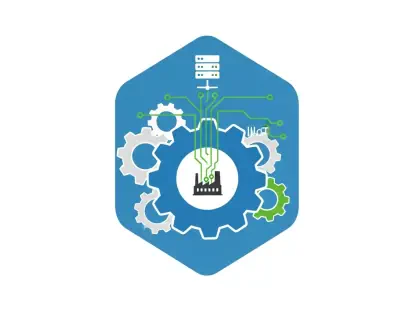Electro-agriculture, an innovative method under development, promises to significantly enhance food production by essentially bypassing the need for traditional photosynthesis. Researchers at the University of California, Riverside, and Washington University in St. Louis are at the forefront of this pioneering approach, which uses a solar-powered chemical reaction to convert carbon dioxide (CO2) and water into acetate. Genetic modification enables plants to consume acetate, offering a novel way to fuel their growth. This transformation could make food production more efficient, sustainable, and adaptable to diverse conditions, even beyond Earth.
Efficiency of Electro-Agriculture
Overcoming the Limitations of Photosynthesis
Traditional photosynthesis, despite being a cornerstone of plant growth, is remarkably inefficient, capturing only about 1% of the light energy plants receive. This insufficiency has long limited agricultural productivity and efficiency. However, the concept of electro-agriculture emerges as a game-changing development by potentially increasing energy capture efficiency to approximately 4%. By leveraging a solar-powered chemical reaction, researchers can convert CO2 and water into acetate, a molecule plants can be genetically modified to ingest and utilize for growth.
This innovative method of boosting energy capture addresses one of the most significant bottlenecks in agricultural production—reliance on sunlight. By transcending this natural dependency, electro-agriculture allows for the possibility of cultivating crops indoors, using controlled environments where variables such as light and temperature can be meticulously managed. With a fourfold increase in efficiency, this technique can revolutionize how we approach farming, potentially reducing the land required for agriculture by an impressive 94%.
Advancements in Controlled Environment Farming
The benefits of electro-agriculture extend far beyond just improving energy efficiency. By enabling the indoor cultivation of crops, this approach offers a viable solution to the unpredictability and limitation of outdoor farming. Agronomists envision a future where food production is no longer at the mercy of weather patterns, soil quality, or other environmental conditions. Instead, crops could be grown in optimized indoor facilities, where the use of resources like water and fertilizer can be precisely regulated to maximize yield and quality.
Moreover, the shift to controlled environments means that agricultural land can be repurposed, reducing deforestation and preserving natural ecosystems. This transition is significant for sustainable development and aligns with global efforts to combat climate change and promote environmental conservation. As electro-agriculture progresses from theory to practice, it promises a paradigm shift in the traditional agricultural model, aligning it more closely with the principles of precision farming and ecological stewardship.
Applications and Future Prospects
Initial Applications in Acetate-Utilizing Organisms
While the current focus of electro-agriculture research is on genetically modifying plants like tomatoes and lettuce to consume acetate, the most immediate commercial applications lie with organisms that naturally utilize this molecule. Mushrooms, yeast, and algae are prime candidates for this process, given their existing metabolic pathways that can directly harness acetate for growth. These organisms serve as a proving ground for scaling the technology and making it commercially viable in the short term.
The commercial potential of electro-agriculture in these early stages cannot be underestimated. Mushrooms, for example, are already a significant part of the global food system, valued for their nutritional content and culinary versatility. Similarly, yeast and algae play critical roles in various industries, including food production, pharmaceuticals, and biofuels. By enhancing the growth efficiency of these organisms through electro-agriculture, researchers could unlock new levels of productivity and cost-effectiveness, driving innovation across multiple sectors.
Future Goals for Staple Crops
Beyond immediate applications, researchers have ambitious plans to extend electro-agriculture to high-calorie staple crops such as cassava and sweet potatoes. These crops are essential for global food security, providing vital calories and nutrients for millions of people, particularly in developing countries. The ability to grow these staples using acetate instead of relying on photosynthesis could lead to a radical transformation in global agriculture, ensuring a more resilient and adaptive food supply system.
The ongoing research aims to engineer plants capable of deriving all their necessary energy from acetate, effectively rendering light unnecessary for their growth. This breakthrough would not only revolutionize terrestrial farming but also holds promise for space exploration. Future colonies on Mars or other celestial bodies could utilize electro-agriculture to produce food without relying on natural sunlight, making long-term space missions more feasible.
Conclusion
Electro-agriculture is an emerging method that could revolutionize food production by reducing dependence on traditional photosynthesis. Researchers at the University of California, Riverside, and Washington University in St. Louis are pioneering this innovative approach. They utilize a solar-powered chemical reaction to transform carbon dioxide (CO2) and water into acetate. Genetic modification allows plants to absorb acetate, providing a fresh and efficient means to fuel their growth. This shift could lead to more efficient, sustainable, and adaptable food production, suitable for a variety of environments, including extraterrestrial settings. Such advancements in agricultural technology hold the potential to address food scarcity and make agriculture more resilient to climate change. This method also opens possibilities for growing crops in inhospitable terrains, like deserts or space colonies, where conventional farming methods would be impractical. Consequently, electro-agriculture could be a game-changer in ensuring food security for future generations, offering a promising solution to meet the growing global food demand.
